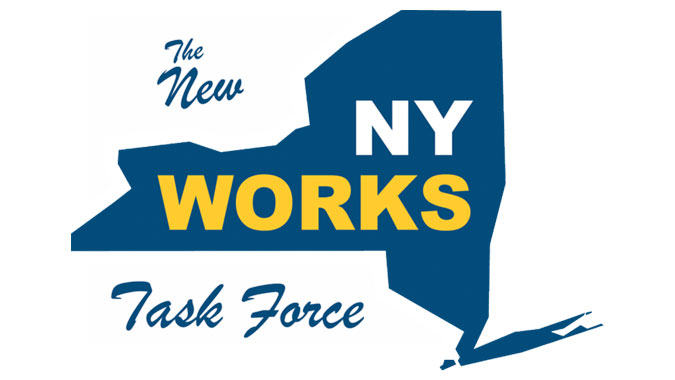
| Name of Agency | New York State Department of Transportation (NYSDOT) |
|---|---|
| Location | Statewide |
| Project Delivery Method | Design-Bid-Build (D-B-B) and Design-Build (D-B) |
| Procurement Method | Low Bid (D-B-B) and Best Value (D-B) |
| Total Project Cost |
|
| Funding Source | Appropriated in annual funding process using existing state and federal funds |
| Construction Schedule | 116 bridge deck replacements in 2 years |
| Project Description | This was a fast-paced program to replace bridge decks on 116 bridges over a period of 2 years. The goal was to get New Yorkers back to work during the slow economy in 2012 and 2013. Both D-B-B and D-B project delivery methods were used to deliver bridge bundles to complete the work. The D-B-B projects were bundled with efforts to maximize efficiency in design and construction. Designs were proposal-only packages, meaning that they were typically produced on 8.5" x 11" paper and contained requirements for construction with minimum details. This allowed the contractors flexibility in construction. The contractor was responsible for existing survey and final deck grades. NYSDOT bridge designers stayed involved during construction to ensure that contractors' details met the requirements in the plans and NYSDOT standards. NYSDOT also gave the contractors flexibility with the order in which they worked on the bridges. Contractors became more efficient as they learned lessons from bridges constructed early in the bundle. NYSDOT incorporated lessons learned into later bundles. The D-B projects were bundled by the zones in which they were located. These projects were typically more complex than were the D-B-B projects. The D-B projects were awarded based on best value. One of the D-B bundles in western New York covered too large of a geographical area. This led to a high bid by a joint venture team of three contractors. The bids were rejected, and the projects were designed by using D-B-B and bundled into smaller packages in closer proximity. The New York works bridge deck replacements are a great example of efficiencies gained in design and construction using bridge bundling. |
| Project Website | https://www.governor.ny.gov/news/governor-cuomo-announces-accelerated-road-and-bridge-projects-central-new-york-part-ny-works |
| Program Goals | Goal was to quickly reduce the number of bridge decks in poor condition and to keep them from becoming poor for at least a period of 10 years. Another goal was to get New Yorkers back to work, leading to a very aggressive schedule. |
|---|---|
| Bridge Selection Criteria |
|
| Delivery and Procurement Method |
|
| Funding Sources, Financing Strategy |
|
| Environmental, Right-of-Way, and Utility Considerations |
|
| Risks | There was minimal risk associated with these deck replacements. Most of the risk was on the contractor. Even the D-B-B contracts had minimal details, making the contractor responsible for ensuring that the new decks were at the proper grade. |
| Owner Management/Quality Assurance |
|
| Stakeholder Communication | The New York Works program was so fast-paced that no advance communication was performed. All bridges were state-owned, and work was within existing right-of-way. |